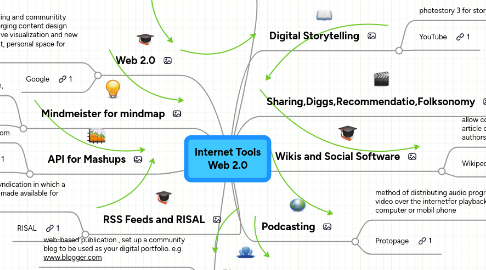Throughout my time student teaching, I used the Internet often as a resource for lesson planning and activity development. I have found a number of quality web sites that I use on a regular basis for planning. Some of the web sites provide excellent resources for examples of quality writing and speaking. 6) Evaluation of teaching and learning performance. 7) Teaching portfolio, documentation of each presentation as entries in an emerging teaching portfolio. 8) Developing a study partnership TENTATIVE. 9) Composing a term paper ( 8-10 pages ) or teaching methods portfolio.
- Storytelling Unitms. Schrader's Teaching Portfolio Assessment
- Storytelling Unitms. Schrader's Teaching Portfolio Allocation
- Storytelling Unitms. Schrader's Teaching Portfolio Lesson
- Storytelling Unitms. Schrader's Teaching Portfolios
Examples of Teaching Strategies: literacy reading and writing literature circles promote the use of literacy content: reading and writing by students working in small groups to discuss a piece of literature; chapter in a novel, story book, newspaper article or a chosen piece of written context. Participants will be able to apply vocabulary teaching strategies with combining and implementing retelling and drama. Steps of Retelling and Drama The 1st Step: Interactive Storytelling. Keys to remember: instructors. Know the story well enough to make its delivery smooth.
Click on here to dowload it.
The Europeanperspective
The “Common EuropeanFramework of Reference for Languages: Learning, teaching, assessment” (CEF)(1) saw the light in its French and English versions in 2001, the European Yearof Languages. It was translated later into more than 20 languages.
The CEF describes in acomprehensive way what language learners have to learn to do in order to use alanguage for communication, and what knowledge and skills they have to developso as to be able to act effectively. It also defines levels of proficiencywhich allow learners’ progress to be measured at each stage of learning, and ona life-long basis.
Theapproach used in this document is an action based approach .Language use,embracing language learning, comprises the actions performed by persons who asindividuals and as social agents develop a range of competences, both general andin particular communicative languagecompetences. They draw on the competences at their disposal in various contexts under various conditions and under various constraints to engage in language activities involving language processes to produce and/orreceive texts in relation to themes in specific domains, activating those strategieswhich seem most appropriate for carrying out the tasks tobe accomplished. The monitoring of these actions by the participants leads tothe reinforcement or modification of their competences.
The CEF promotes the use of the language portfolio. What is theportfolio? This instrument is a way of recording the experience of learning alanguage. It has three main objectives:
a)to promote a life-long learning;
b)to give a control of the linguistic abilities that is recognizedinternationally;
c)to promote a socio-cultural conscience and a tolerant attitudetowards other cultures and languages
Each pupil will have his or her portfolio that will accompany himor her during the whole learning process.
The European Language Portfolio consists of three elements:
The Language Passport
It offers a general perspective of the linguistic abilities ofeach pupil in one or more languages. It includes the linguistic competence inthe four skills and it includes elements of self-evaluation and evaluation madeby the teacher, as well as any certificate the pupil has acquired during his orher learning process.
The LinguisticBiography
This instrument wants the pupil to evaluate the learning process.It also wants a reflection on it so that pupils can plan their future learning.It encourages pupils to think what they can do in the foreign language and itincludes information about the linguistic and cultural experience acquired inand outside the school. It finally pretends that the pupil recognizes that he orshe can understand and speak the foreign language.

The Dossier
The dossier contains the practical work that illustrates theachievements indicated in the language passport and linguistic biography.
We have recently publishes a series for English for Primary (2)where we have tried to produce a practical version of the portfolio so thatteachers and pupils in Spain can use it without difficulty. We tried tofamiliarize them so they can use them in the future in Secondary Educationbecause we think that they will be a general tool in a couple of years. We alsothink it is an important tool for the secondary education teachers who willknow exactly what their students have done in the previous courses.
In our version of the portfolio we have included several elementswe think that are important for a primary school learner. First of all itincludes a proposal of the language that has been taught and learned. Thisproposal that the pupils have to tick comes in sentences that begin with “Iknow....” We also give them a record sheet where they can select the languagethe use more or they like most. Here we emphasize that the language they havelearnt is the language they can use.
Storytelling Unitms. Schrader's Teaching Portfolio Assessment
There is a section where they can record the additional activitiesthey have done as well as the projects they have done with their teachers andexceed the English class.
Storytelling Unitms. Schrader's Teaching Portfolio Allocation
Apart from thedifferent skills and linguistic abilities we have incorporated aself-evaluation sheet and a learning strategies record sheet that we includebelow:
It is important theyoung learner has an opportunity to think about how the foreign language islearned.
In general, we thinkthat this new approach to collecting data for teachers and learners willimprove the quality of the teaching and learning in all European countries.
References
Storytelling Unitms. Schrader's Teaching Portfolio Lesson
(1)European Commission (2002), CommonEuropean Framework of Reference for Languages. Brussels

(2)Bazo, Peñate et al (2005), CoolKids, Oxford University Press. Series for Primary Education.
Storytelling Unitms. Schrader's Teaching Portfolios
